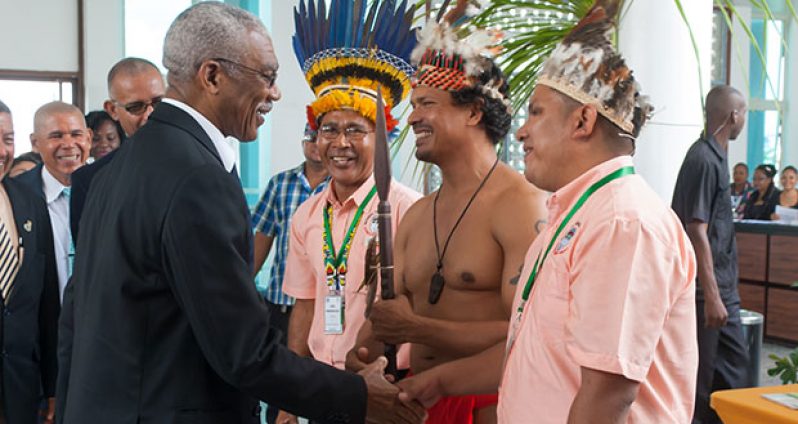– President
THE proposal to establish a five-member National Indigenous Peoples’ Authority (NIPA) is to ensure the better delivery of services to people residing in hinterland communities and will in no way obstruct the work of the National Toshaos Council (NTC) or the Ministry of Indigenous Peoples’ Affairs. This is according to President David Granger, who made the initial proposal during his address at the opening of the National Toshaos Conference on August 22, where he noted that the NIPA will be an executive body which will implement relevant government policies and decisions of the NTC.
Since the announcement, the President’s proposal has received mix reactions with former Amerindian Affairs Minister Pauline Sukhai stating that the NTC must have the scope to implement its decisions and so she does not agree with the call made for the establishment of an Indigenous Peoples’ Authority.
But the President during his appearance on the weekly programme, The Public Interest, explained that there is a gap between the council and the government.
“My proposal was simply to expedite or facilitate the delivery of services to the people. It was not an obstruction, it is not an obstacle; it is not taking away from the NTC or the Ministry of Indigenous People’s Affairs,” the Head of State said.
The President alluded to the distance to reach certain hinterland communities, the poor infrastructure, low performance rate at the National Grade Six Examination, poor delivery of health care and fewer employment opportunities, as issues which indigenous people face on a daily basis.
“All in all, life is more difficult for most of the people there…it’s not an ethnic problem, it’s more a geographical problem.
“My intention was simply to ensure the better delivery of services to the hinterland communities. It was not meant to obstruct the work of the NTC…it was just meant to ensure that because this body only meets once every year, in between meetings there is some agency, some authority which is actually getting work done. So it is meant to assist in the delivery of public service to the hinterland communities.”
Meanwhile, as it relates to the issue of land titles for indigenous peoples, the President revealed that he plans to re-establish a form of Indigenous Peoples Land Commission, so that demarcation could be done to the satisfaction of both sides.
This commission should be in place by December 31, the President said.




.png)









